Blog
Guide to Project Management Office: PMO Types, Key Functions and Best Practices

A Project Management Office is a centralised hub designed to optimise project performance, enhance efficiency, and drive strategic objectives. In this comprehensive guide, we delve into the essential functions and best practices that define a successful PMO.
From establishing project governance and standardising methodologies to fostering collaboration and providing robust oversight, we explore the multifaceted roles that PMOs play in steering projects toward success.
Whether you’re a seasoned project management professional or a newcomer to the PMO landscape, this guide is your roadmap to mastering the core functions and adopting best practices for effective project management at the organisational level.
Definition and Purpose of a PMO
Let’s start with the basics. A Project Management Office, or PMO, is a centralised hub that ensures standardisation, governance, and execution of projects within an organisation. Think of it as the command centre, guiding projects from initiation to completion.
The Purpose Unveiled
The primary purpose of a PMO is to improve project management efficiency and effectiveness. By establishing clear methodologies, providing standardised tools, and offering guidance, a PMO becomes the guiding force that steers projects towards success. It’s not just about managing projects but doing so strategically, aligning them with organisational goals.
Types of PMOs
Although PMO types vary widely, we’ll focus on the classifications provided by the Project Management Institute (PMI) as of 2023, offering a clear framework for understanding the common variations of PMOs.
1. Enterprise Project Management Office (EPMO):
An EPMO sets standards and processes to enhance project performance across an organisation, aligning them with strategic objectives. Operating at the corporate level and often reporting to top executives like the COO, an EPMO holds significant strategic influence. It’s most effective in environments needing strategic cohesion, but may not suit smaller organisations or teams needing detailed guidance. The success of an EPMO hinges on its strong connection with the C-suite, thriving when it consistently delivers high-level organisational value.

2. Departmental PMO:
A Departmental PMO operates within a specific department, like IT or finance, supporting a range of projects, from small initiatives to complex, multi-year programs. Its key role is to ensure these projects stay on track and within scope, while providing necessary resources and support. However, its effectiveness is limited without structures to connect it to other departments and the C-suite. To sustain its value, a Departmental PMO must address department-specific needs while aligning with the organisation’s broader vision and project portfolio.

3. Individual PMO:
An Individual PMO is tailored for a single, complex project or program, establishing a framework for infrastructure, document management, and training. It sets basic standards and oversees the project’s planning and control activities. This type of PMO is best deployed for large, critical, or unique projects that require specialised attention, such as major change initiatives or building a complex healthcare facility. It is less suitable for standard projects that align with the broader organisational goals. Individual PMOs typically have short lifespans, reflecting their focused and specific support for particular initiatives.

4. Supportive PMO:
A Supportive PMO functions as a consultative resource, offering project teams templates, best practices, training, and insights from other projects. It’s ideal for capable, mature project teams that could benefit from additional resources and knowledge to enhance their efficiency and effectiveness. However, it’s less suitable for inexperienced teams that require more direct guidance and oversight. To remain effective, a Supportive PMO continuously assesses and addresses the varying needs of project teams, reinforcing areas of weakness with targeted knowledge and administrative support.

5. Controlling PMO:
A Controlling PMO is focused on enforcing compliance and adherence to specific project management frameworks, templates, and tools. It functions with a top-down approach, often conducting audits and requiring rigid adherence to processes, akin to a “PMO police.” This PMO type is most valuable in highly regulated industries like finance or construction, where strict compliance is crucial to prevent severe consequences. However, it may not be suitable for projects needing high levels of innovation or flexibility. The sustainability of a Controlling PMO depends on its ability to maintain quality and consistency across projects, despite often lacking active executive-level support.
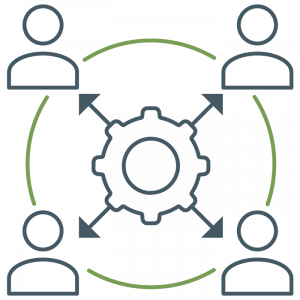
6. Project Management Community of Practice/Excellence:
A Project Management Community of Practice/Excellence, or a Center of Excellence, is instrumental in embedding a project management framework within an organisation. It establishes consensus on basic tools, templates, and approaches. Ideally positioned alongside or within an EPMO, it sets or revises organisation-wide project standards. Comprising internal project experts, this group ensures that these standards are implemented across teams. However, without executive-level endorsement, its standards may struggle for acceptance, limiting its effectiveness. To sustain its impact, the organisation must cultivate a pool of skilled project professionals, ensuring a continuous supply of leaders to uphold and review these standards.
Roles, Functions, and Responsibilities
Key Roles within a PMO
- PMO Director (or PMO Officer): The captain of the ship, responsible for overseeing the entire PMO and ensuring alignment with organisational objectives.
- Project Managers: These are the boots on the ground, managing day-to-day project activities and ensuring deliverables are met.
- PMO Analysts: The data wizards who analyse project performance, identify trends, and provide insights to improve overall project management.
Functions and Responsibilities
- Standardising Processes: A PMO establishes and enforces standardised project management processes. This ensures consistency and clarity throughout the project lifecycle.
- Resource Allocation: Efficient allocation of resources is crucial for project success. The PMO helps in identifying and allocating resources effectively, avoiding bottlenecks.
- Risk Management: From identifying potential risks to developing mitigation strategies, the PMO plays a vital role in minimising uncertainties that can derail a project.
- Reporting and Communication: A PMO is the communication bridge, ensuring stakeholders are informed, and project progress is transparent.
Benefits of a PMO

Enhanced Project Success Rate
PMOs significantly contribute to project success by providing the necessary frameworks, methodologies, and tools. This ensures that projects are executed with precision, minimising the risk of failure.

Improved Resource Utilisation
By optimising resource allocation, PMOs prevent resource bottlenecks and ensure that the right people are working on the right tasks at the right time. This efficiency boost directly impacts project timelines and outcomes.

Strategic Alignment
A PMO ensures that projects are aligned with the strategic goals of the organisation. This alignment is crucial for maximising the impact of individual projects on the overall success of the business.

Risk Mitigation
Identifying and addressing risks early in the project lifecycle is a forte of PMOs. By actively managing risks, a PMO minimises the chances of project disruptions, ensuring smoother execution.
Challenges and Downfalls
Resistance to Change
Implementing a PMO often faces resistance from teams accustomed to their existing project management methods. Overcoming this resistance requires effective communication and change management strategies.
Resource Constraints
While a PMO aims to optimise resource utilisation, resource constraints can still pose challenges. Balancing project demands with available resources requires careful planning and prioritisation.
Lack of Executive Support
For a PMO to thrive, it needs strong support from the top. Lack of executive buy-in can hinder the PMO’s effectiveness and limit its impact on the organisation.
Failure to Adapt
In a rapidly changing business environment, a PMO must be adaptable. Failing to evolve and embrace new methodologies and technologies can lead to obsolescence.
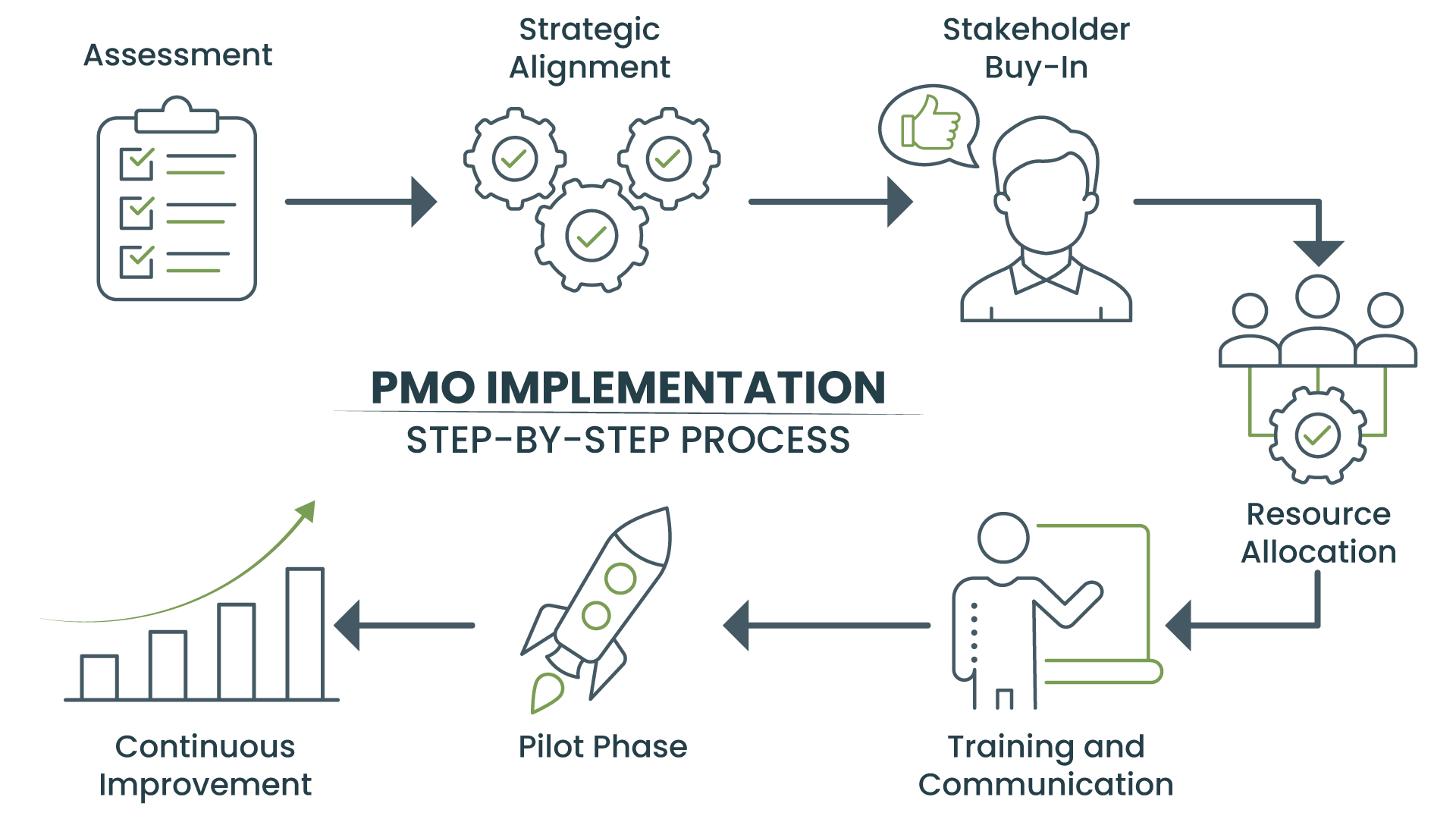
PMO Implementation
Step-by-Step Implementation Process
- Assessment: Understand the organisation’s current project management landscape, identify strengths, weaknesses, and areas for improvement.
- Strategic Alignment: Ensure that the PMO is aligned with the organisation’s strategic goals and objectives.
- Stakeholder Buy-In: Secure support from key stakeholders, including top-level executives, to ensure a smooth implementation process.
- Resource Allocation: Allocate the necessary resources, both human and technological, for the successful launch of the PMO.
- Training and Communication: Provide training to staff on new processes and tools. Effective communication is key to managing expectations and fostering acceptance.
- Pilot Phase: Implement the PMO on a smaller scale initially, allowing for adjustments and fine-tuning before full-scale deployment.
- Continuous Improvement: Regularly evaluate and refine PMO processes to adapt to changing project management needs and organisational dynamics.

PMO Software
PMO software acts as the technological backbone of a Project Management Office, streamlining processes and enhancing efficiency.
Key features to look for:
- Project Planning and Scheduling: A robust PMO software should offer tools for effective project planning and scheduling, ensuring that timelines are realistic and manageable.
- Resource Management: The software should facilitate efficient resource allocation, helping PMOs avoid overburdening individuals or teams.
- Reporting and Analytics: Comprehensive reporting tools provide insights into project performance, allowing for data-driven decision-making and continuous improvement.
- Collaboration Tools: Foster collaboration among team members with features like real-time document sharing, communication channels, and collaborative project spaces.
- Risk Management: A good PMO software includes features for identifying, assessing, and managing project risks.
Conclusion
In the realm of project management, the Project Management Office is the guiding entity that ensures projects stay on course and reach their destination successfully. By understanding the types, roles, functions, and best practices associated with PMOs, organisations can unlock the full potential of their projects. Remember, implementing a well-functioning PMO is essential, not just a luxury, for effectively managing the complexities of project management in today’s dynamic business environment.
So, as you embark on your project management journey, consider the power of a well-structured and efficiently operated PMO. It might just be the secret ingredient that transforms your projects from good to exceptional.


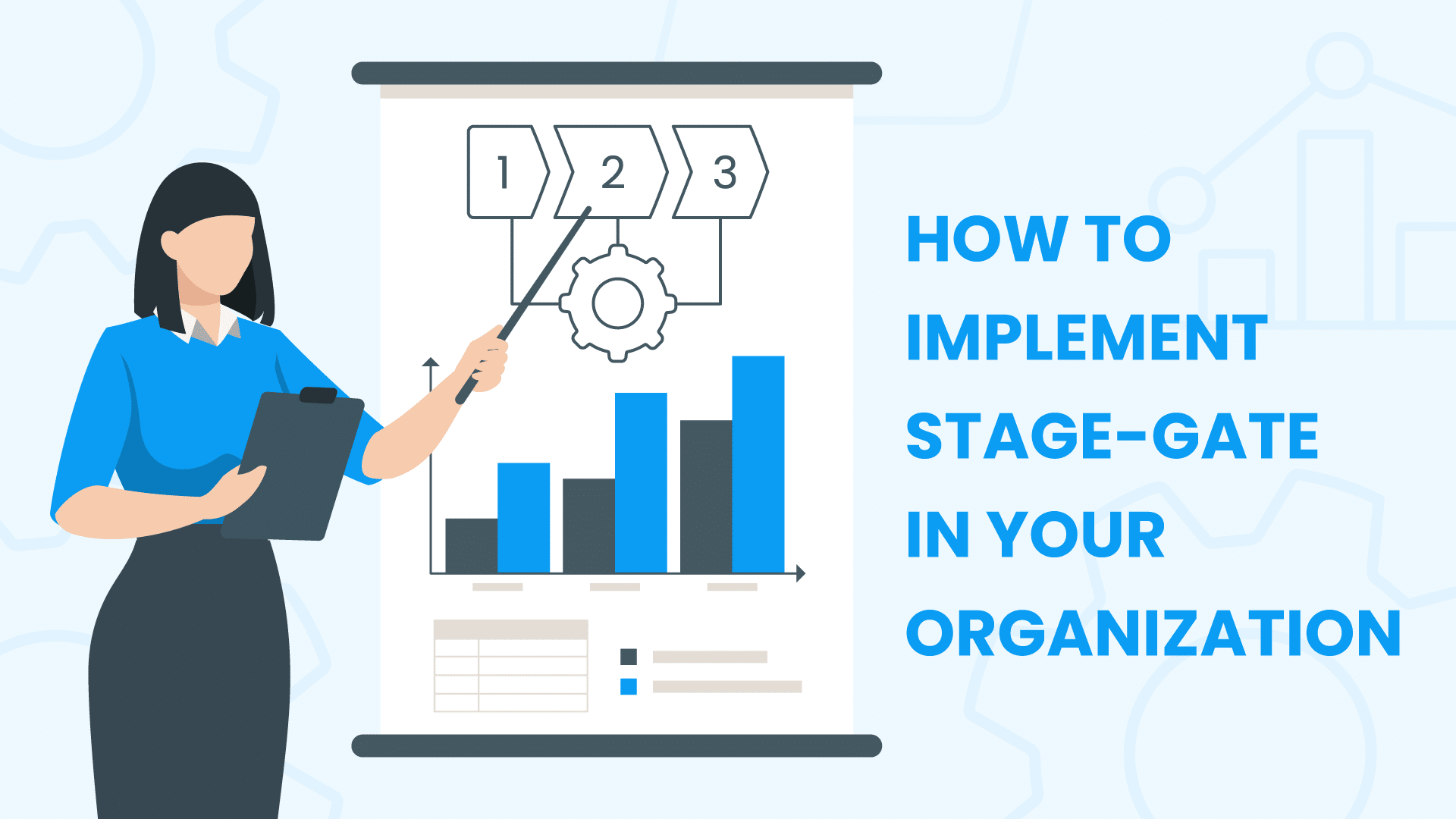






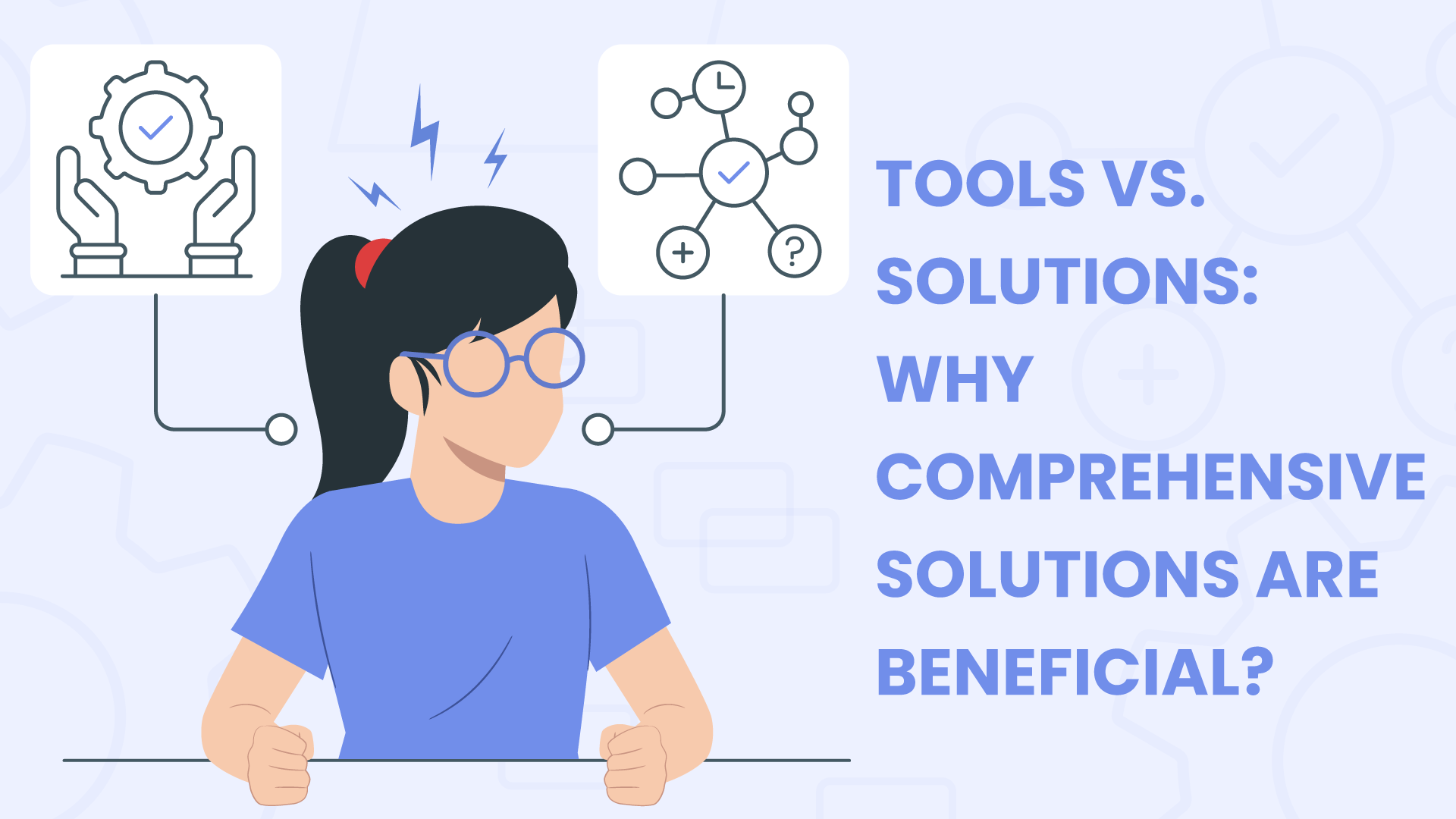




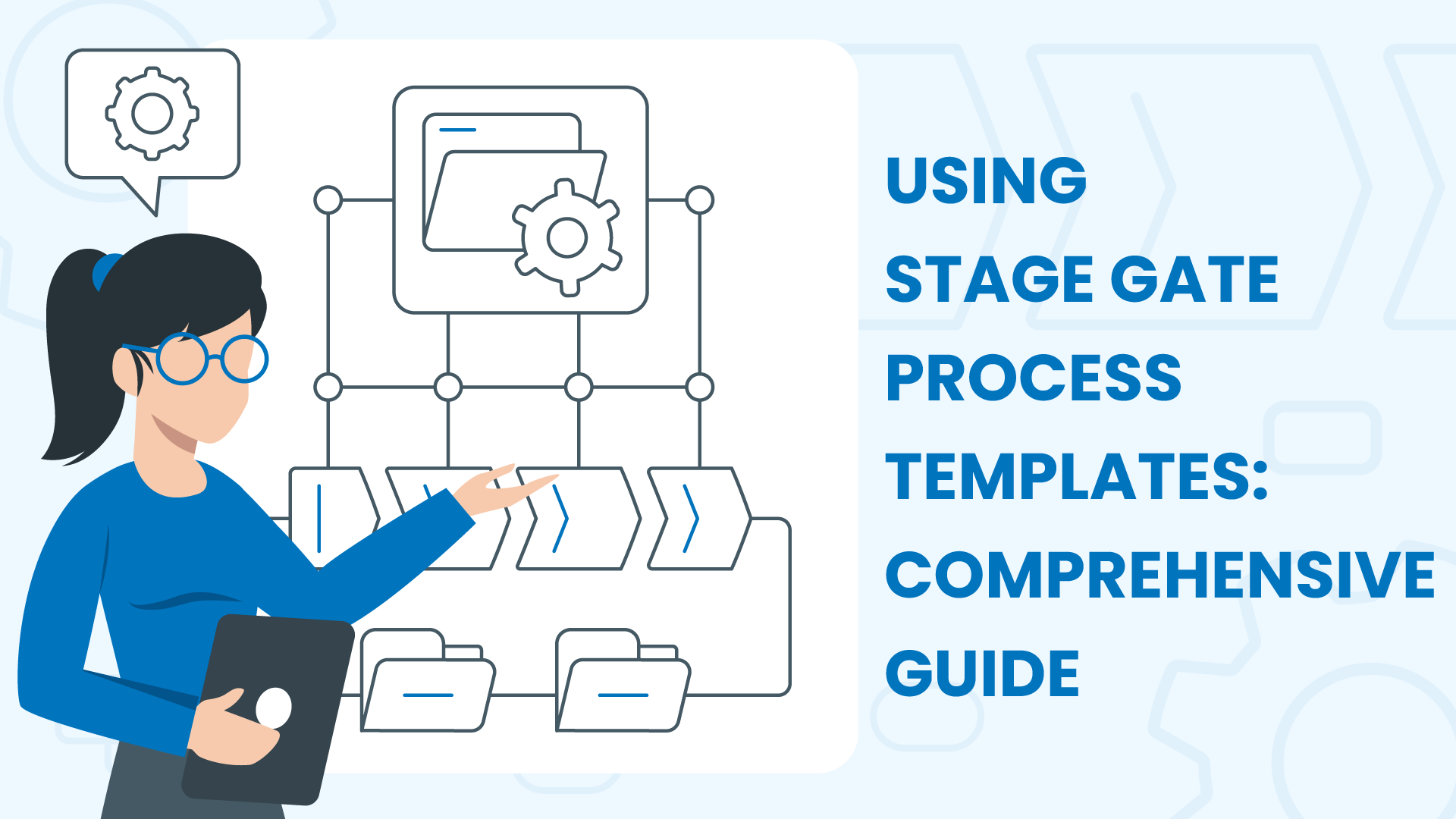




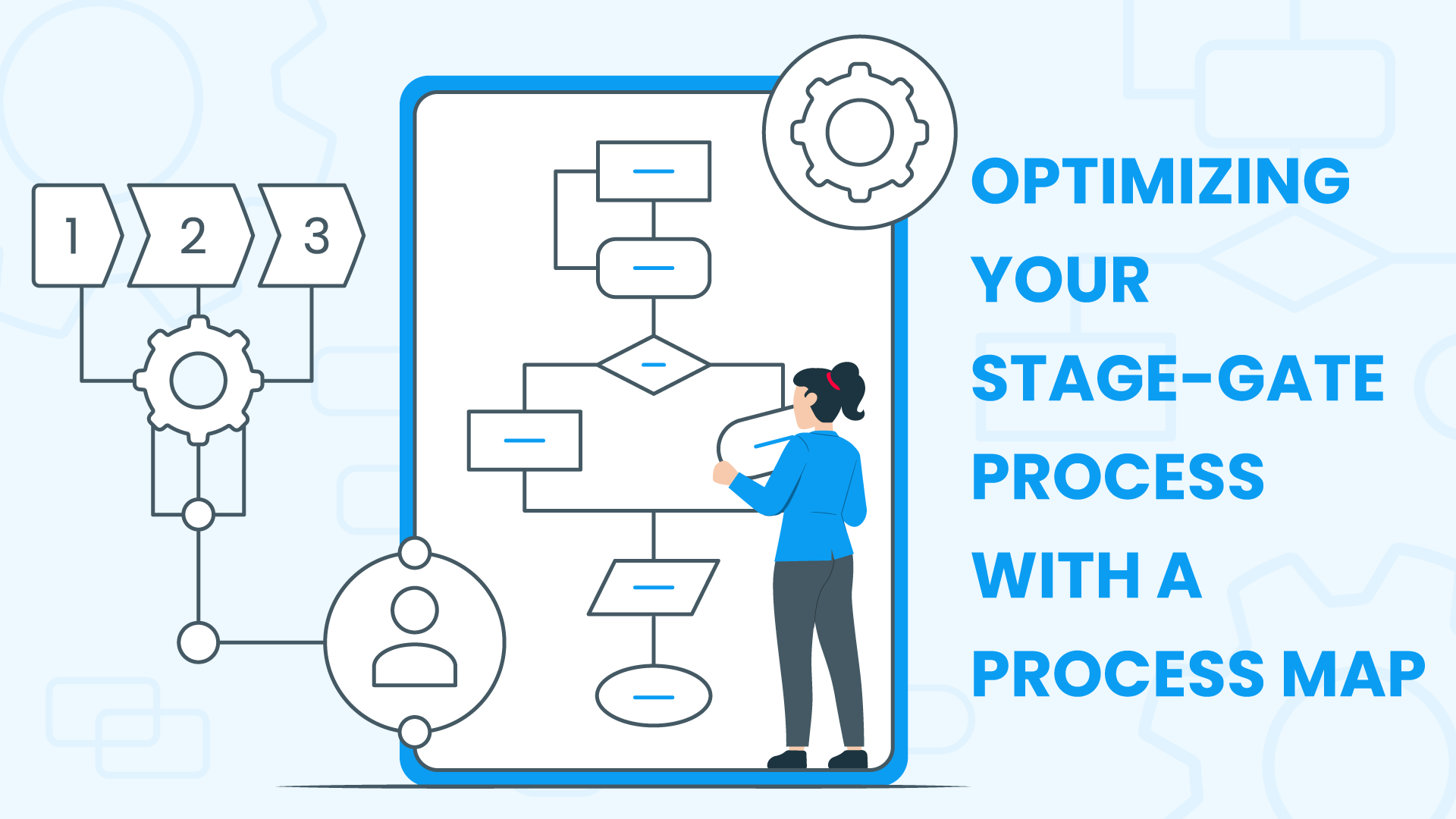




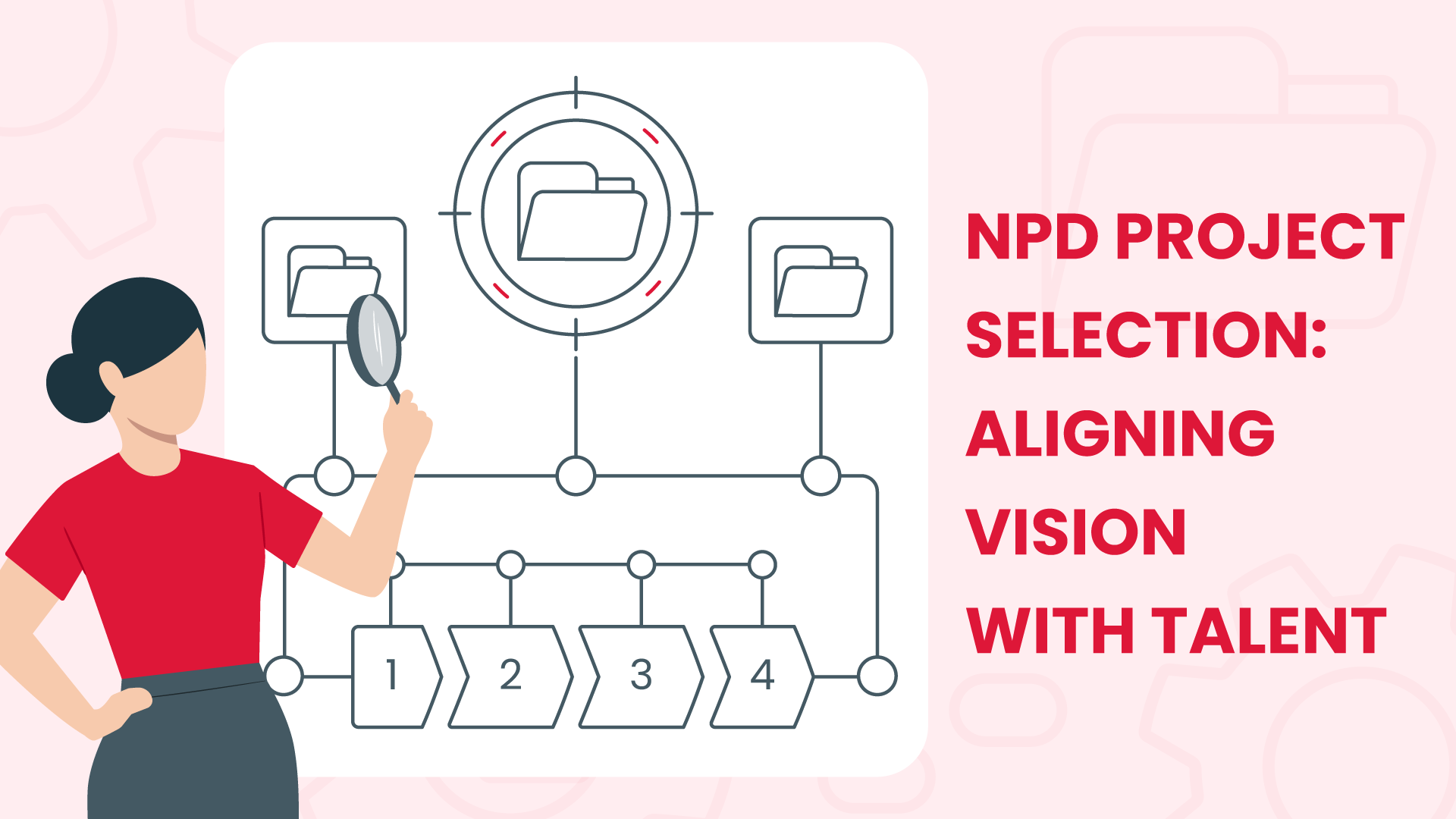






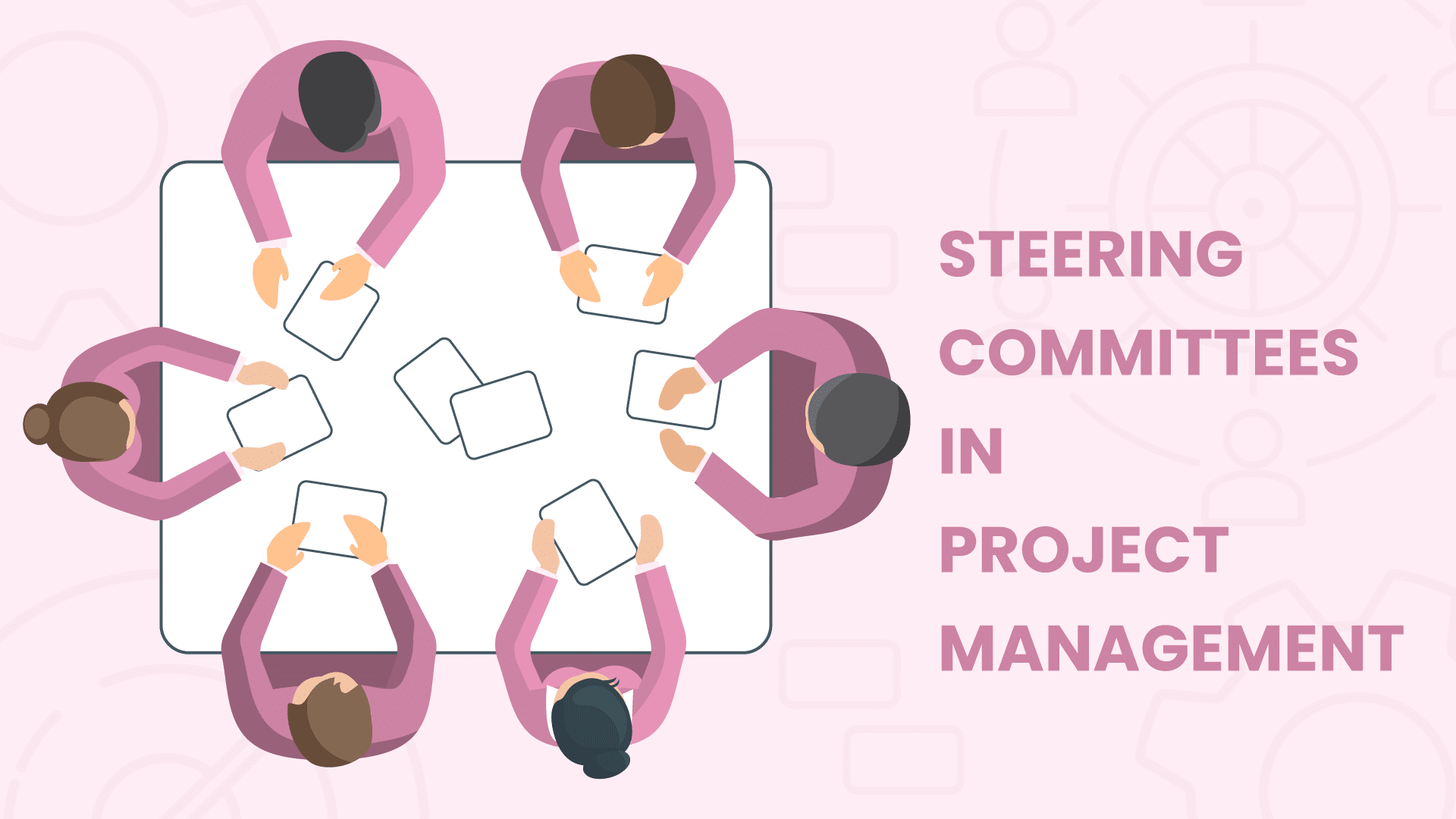






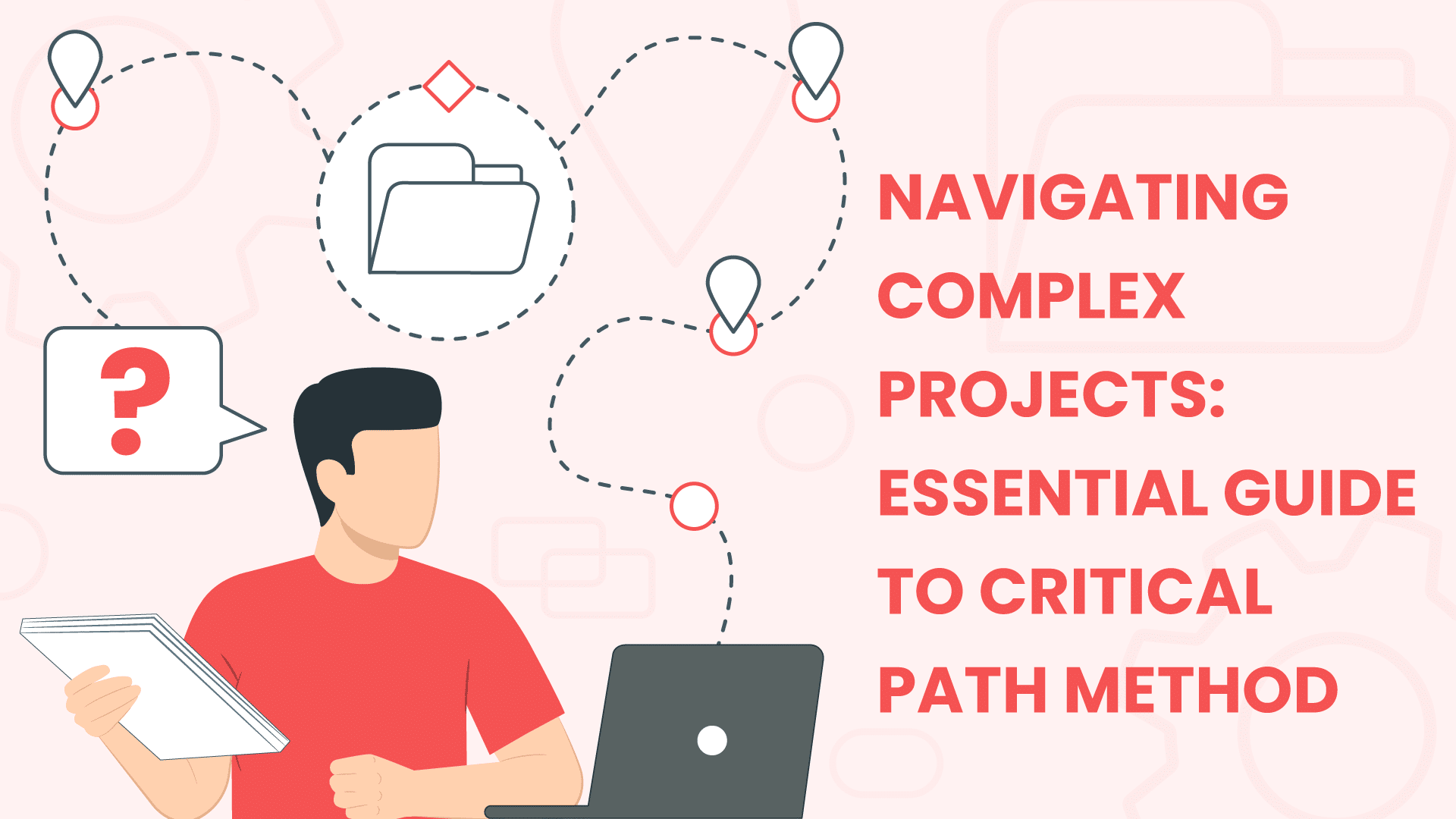







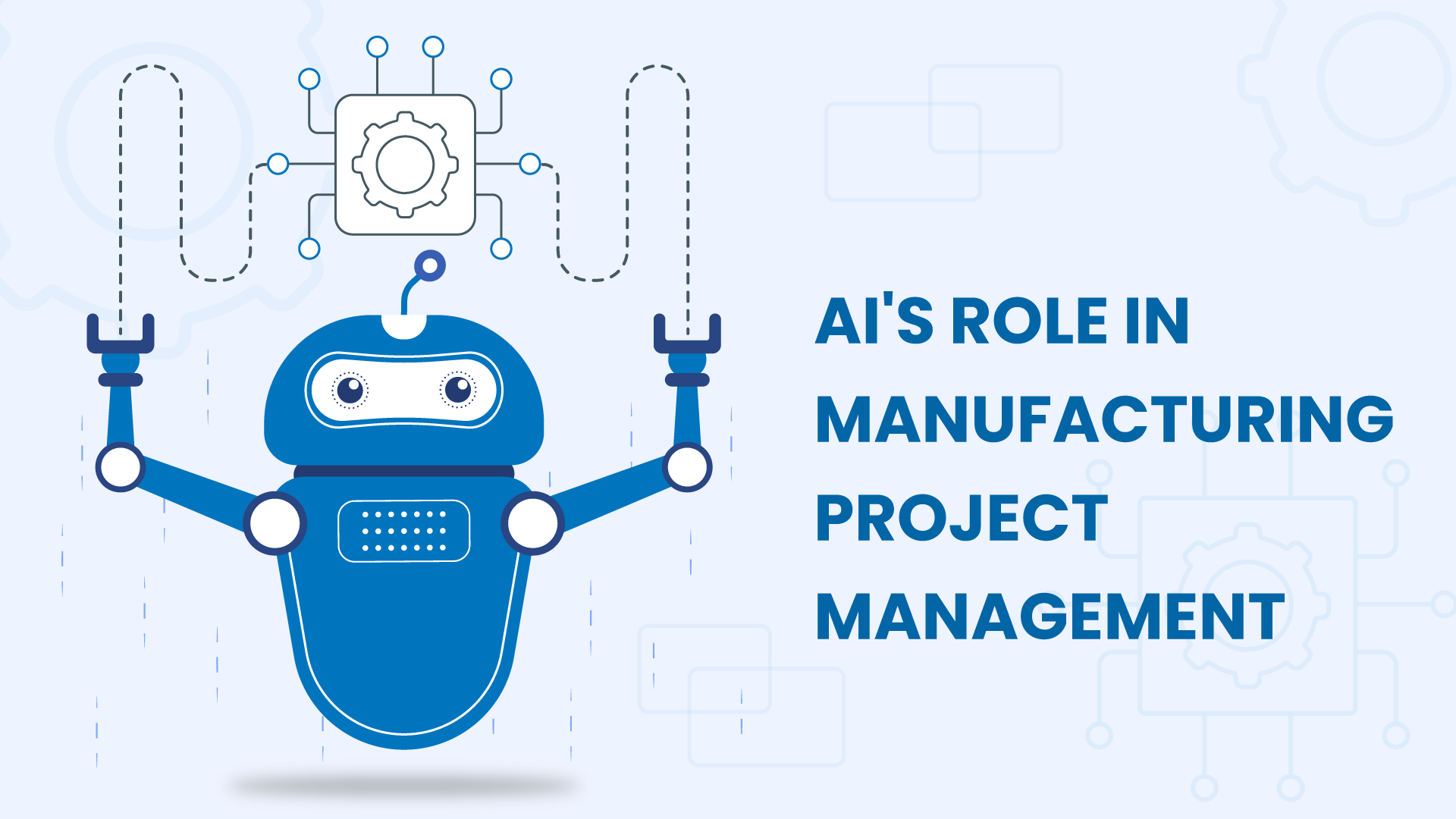




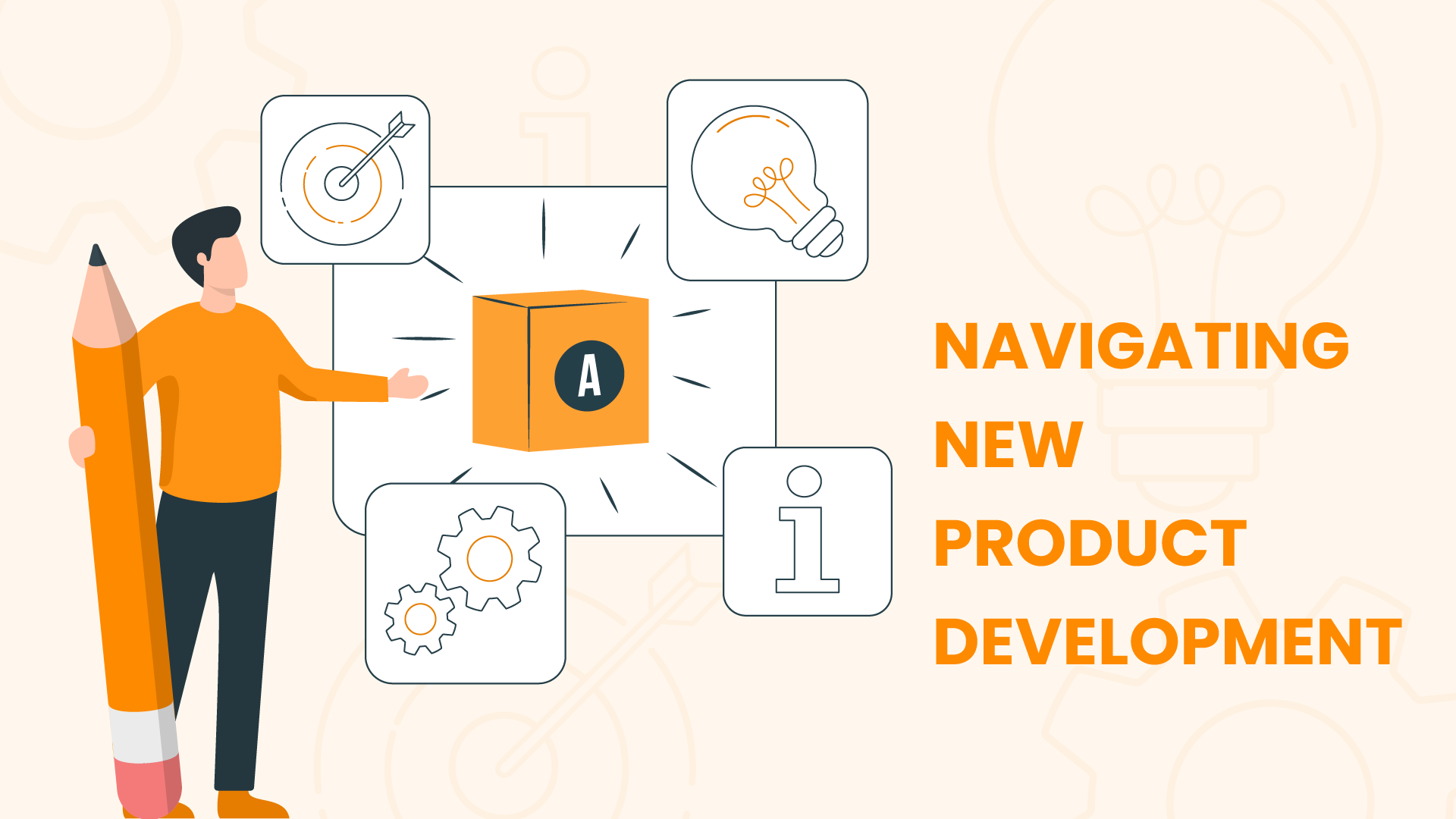





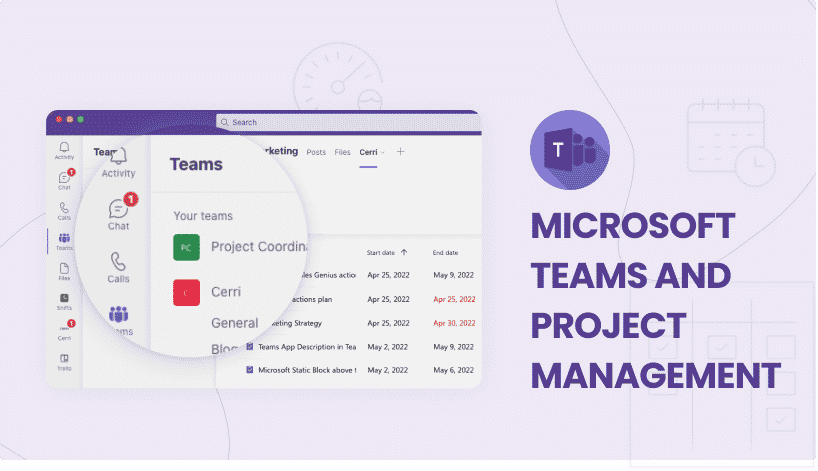




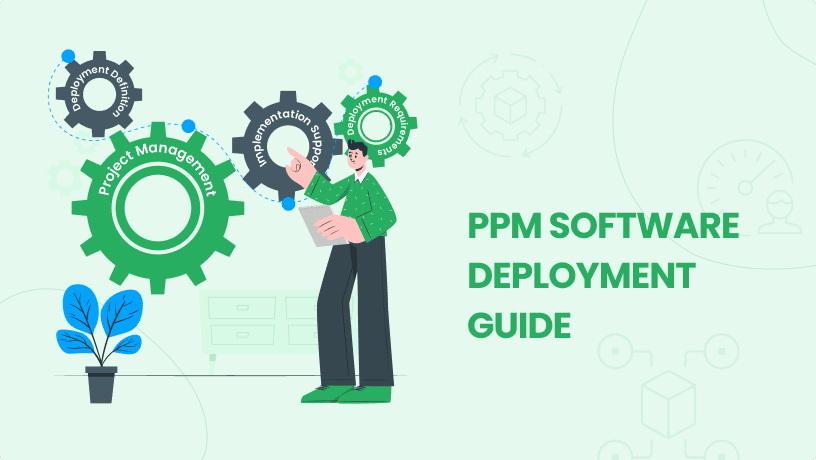
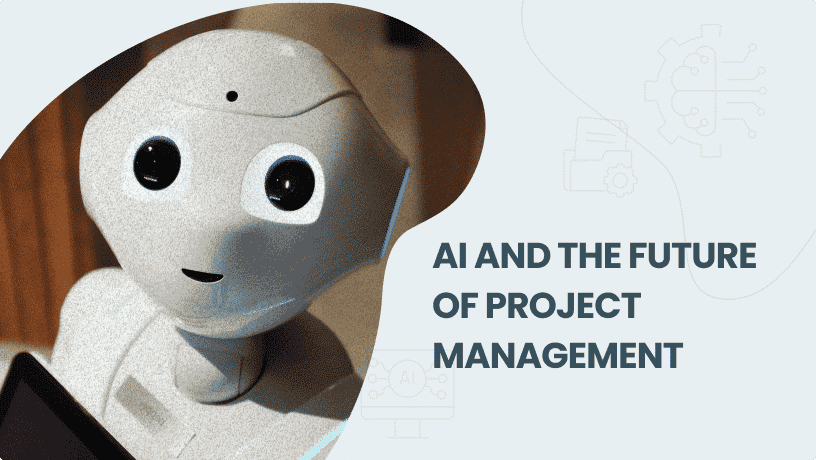







 Task Management
Task Management 

















 Customization
Customization
